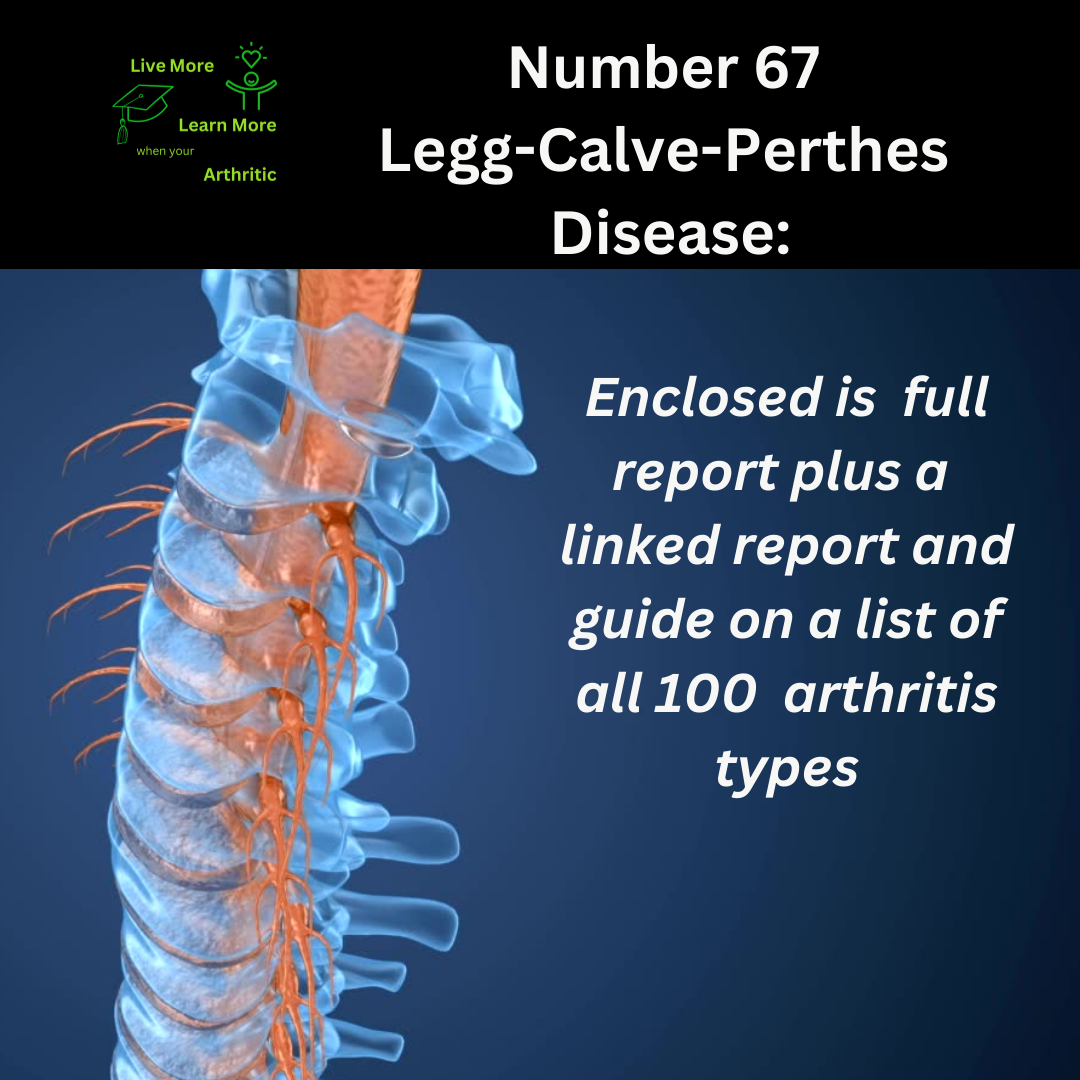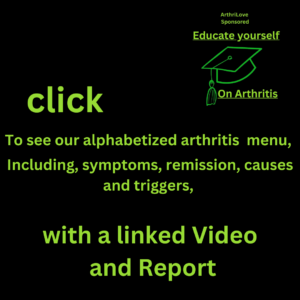
Legg-Calve-Perthes Disease: Number 67 on the list of 100 types of Arthritis
Legg-Calve-Perthes disease, also known as Perthes disease or Legg-Perthes disease, is a rare childhood condition that affects the hip joint. While it presents unique challenges, understanding this disease and its management can empower individuals and families facing this diagnosis.
 Description of Legg-Calve-Perthes Disease
Description of Legg-Calve-Perthes Disease
Legg-Calve-Perthes disease is characterized by a temporary interruption of blood supply to the femoral head (the “ball” of the hip joint), leading to bone death (avascular necrosis) and subsequent degeneration of the hip joint. This can result in pain, stiffness, and limitation of hip movement.
Causes and Triggers
The exact cause of Legg-Calve-Perthes disease is not fully understood, but it is believed to involve a combination of genetic factors and vascular abnormalities. Certain factors, such as trauma or injury to the hip joint, may contribute to the development of this condition.
Symptoms
The symptoms of Legg-Calve-Perthes disease can vary but often include:
- Hip pain: Persistent pain in the hip or groin area, which may worsen with physical activity.
- Limping: Children may develop a noticeable limp or favor one leg while walking.
- Limited range of motion: Stiffness and reduced mobility of the hip joint, making activities like running or climbing stairs challenging.
- Muscle atrophy: Weakening and shrinking of the muscles around the affected hip joint.
Common Ages of Onset
Legg-Calve-Perthes disease typically occurs in children between the ages of 4 and 8, although it can affect older children as well. It is more common in boys than girls.
Impact on Lifespan
Legg-Calve-Perthes disease generally does not affect one’s lifespan directly. However, it can lead to complications such as hip joint deformity and early-onset arthritis later in life if not managed effectively.
Legg-Calve-Perthes disease is not considered an autoimmune disorder. It primarily involves vascular and degenerative changes in the hip joint.
Achieving a Higher Quality of Life
With a proactive approach to managing Legg-Calve-Perthes disease, individuals can optimize their quality of life. Strategies include:
- Activity modification: Encouraging low-impact activities and avoiding high-impact sports that could exacerbate hip joint symptoms.
- Physical therapy: Implementing a tailored exercise program to maintain joint mobility, strengthen muscles, and improve overall function.
- Orthotic devices: Using supportive devices such as braces or shoe inserts to assist with walking and alleviate pressure on the hip joint.
Possible Complications
Complications of Legg-Calve-Perthes disease may include:
- Hip joint deformity: Progressive changes in the shape of the femoral head and hip socket, leading to joint misalignment.
- Early-onset arthritis: Wear and tear of the hip joint surfaces over time, resulting in pain and reduced mobility.
- Leg length inequality: Differences in leg length due to abnormal growth of the affected hip.
Natural Breakthroughs or Health Advantages
There are no specific natural breakthroughs associated with Legg-Calve-Perthes disease. However, maintaining a healthy lifestyle with a balanced diet, regular exercise, and stress management can support overall well-being and joint health.
Gender and Age Prevalence
Legg-Calve-Perthes disease predominantly affects boys, with a male-to-female ratio of approximately 4:1. The condition typically presents during early childhood and may resolve by adolescence.
Interconnected Diseases or Conditions
There are no specific interconnected diseases directly associated with Legg-Calve-Perthes disease. However, it’s important to monitor for potential long-term hip joint complications and address any underlying factors that may contribute to joint pain and dysfunction.
In conclusion, Legg-Calve-Perthes disease is a rare but impactful condition that requires comprehensive management to optimize outcomes and quality of life. With a proactive approach involving activity modification, physical therapy, and supportive devices, individuals with Legg-Calve-Perthes disease can navigate the challenges of this condition and maintain functional mobility. Collaboration with healthcare professionals specializing in pediatric orthopedics is essential for personalized care and optimal outcomes.
